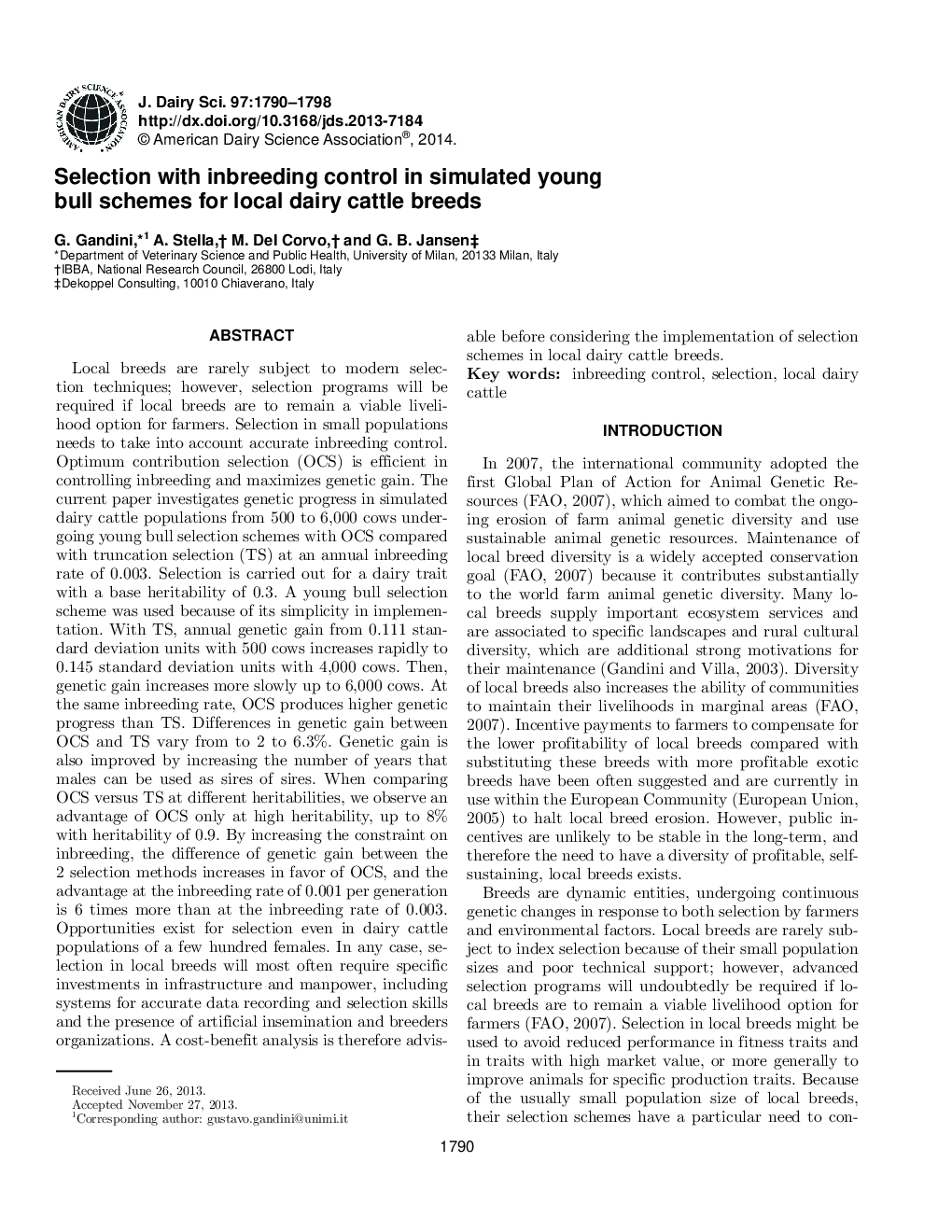| کد مقاله | کد نشریه | سال انتشار | مقاله انگلیسی | نسخه تمام متن |
|---|---|---|---|---|
| 10975201 | 1108031 | 2014 | 9 صفحه PDF | دانلود رایگان |
عنوان انگلیسی مقاله ISI
Selection with inbreeding control in simulated young bull schemes for local dairy cattle breeds
ترجمه فارسی عنوان
انتخاب با کنترل انفرادی در طرح های گاو نر جوان برای مدل های گاو محلی
دانلود مقاله + سفارش ترجمه
دانلود مقاله ISI انگلیسی
رایگان برای ایرانیان
کلمات کلیدی
کنترل درونی، انتخاب، گاو شیری محلی،
موضوعات مرتبط
علوم زیستی و بیوفناوری
علوم کشاورزی و بیولوژیک
علوم دامی و جانورشناسی
چکیده انگلیسی
Local breeds are rarely subject to modern selection techniques; however, selection programs will be required if local breeds are to remain a viable livelihood option for farmers. Selection in small populations needs to take into account accurate inbreeding control. Optimum contribution selection (OCS) is efficient in controlling inbreeding and maximizes genetic gain. The current paper investigates genetic progress in simulated dairy cattle populations from 500 to 6,000 cows undergoing young bull selection schemes with OCS compared with truncation selection (TS) at an annual inbreeding rate of 0.003. Selection is carried out for a dairy trait with a base heritability of 0.3. A young bull selection scheme was used because of its simplicity in implementation. With TS, annual genetic gain from 0.111 standard deviation units with 500 cows increases rapidly to 0.145 standard deviation units with 4,000 cows. Then, genetic gain increases more slowly up to 6,000 cows. At the same inbreeding rate, OCS produces higher genetic progress than TS. Differences in genetic gain between OCS and TS vary from to 2 to 6.3%. Genetic gain is also improved by increasing the number of years that males can be used as sires of sires. When comparing OCS versus TS at different heritabilities, we observe an advantage of OCS only at high heritability, up to 8% with heritability of 0.9. By increasing the constraint on inbreeding, the difference of genetic gain between the 2 selection methods increases in favor of OCS, and the advantage at the inbreeding rate of 0.001 per generation is 6 times more than at the inbreeding rate of 0.003. Opportunities exist for selection even in dairy cattle populations of a few hundred females. In any case, selection in local breeds will most often require specific investments in infrastructure and manpower, including systems for accurate data recording and selection skills and the presence of artificial insemination and breeders organizations. A cost-benefit analysis is therefore advisable before considering the implementation of selection schemes in local dairy cattle breeds.
ناشر
Database: Elsevier - ScienceDirect (ساینس دایرکت)
Journal: Journal of Dairy Science - Volume 97, Issue 3, March 2014, Pages 1790-1798
Journal: Journal of Dairy Science - Volume 97, Issue 3, March 2014, Pages 1790-1798
نویسندگان
G. Gandini, A. Stella, M. Del Corvo, G.B. Jansen,
